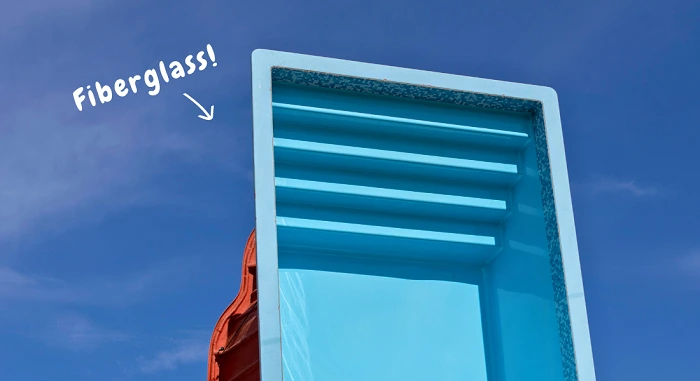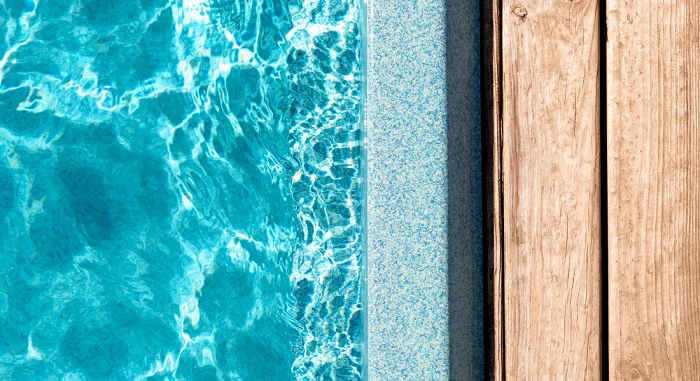Fiberglass pools have become increasingly popular among homeowners for their durability, ease of maintenance, and aesthetic appeal. If you’re considering installing a fiberglass pool in your backyard, you’re in for a treat! This comprehensive guide will walk you through everything you need to know about fiberglass pool installation, from the initial planning stages to enjoying your first swim.
Table of Contents
ToggleUnderstanding Fiberglass Pools: What Sets Them Apart?
Fiberglass pools offer numerous advantages over traditional concrete or vinyl pools. Their smooth, non-porous surface resists algae growth and requires less chemical maintenance. Additionally, fiberglass pools can be installed relatively quickly compared to other types, making them an attractive option for homeowners seeking a faster turnaround time.

The Installation Process: Step-by-Step Guide
What does the fiberglass pool installation process entail?
Installing a fiberglass pool involves several key steps, starting with the excavation of the pool area. Once the hole is dug to the appropriate size and shape, the pool shell is carefully lowered into place using a crane.
How is the pool shell secured?
After the pool shell is positioned correctly, it’s crucial to ensure it’s level and properly supported. This may involve backfilling the area around the pool with gravel or another suitable material to provide stability.
What about plumbing and electrical work?
Before the pool can be filled with water, it needs to be plumbed and connected to the filtration system. This includes installing pipes, valves, and other necessary components to ensure proper water circulation and filtration.
How is the pool deck constructed?
Once the pool is in place and operational, attention can turn to the surrounding area. The pool deck is an essential feature that enhances the functionality and aesthetics of the space. Depending on your preferences and budget, you can choose from a variety of materials such as concrete, pavers, or wood.
Key Considerations for a Successful Installation
What factors influence the placement of the pool?
When planning the location of your fiberglass pool, several factors must be taken into account. These include local building codes, underground utilities, soil conditions, and proximity to trees or other structures that could impact the pool’s stability.
How do you ensure proper backfilling?
Proper backfilling is essential for supporting the pool shell and preventing shifting or settling over time. This typically involves using gravel or sand to fill in the space around the pool, ensuring adequate drainage and support.
What maintenance is required after installation?
While fiberglass pools require less maintenance than other types, they still require regular upkeep to keep them looking and performing their best. This includes regular cleaning, water testing, and balancing chemicals to ensure safe and comfortable swimming conditions.
Maximizing Your Fiberglass Pool Experience
What additional features can enhance your pool experience?
In addition to the pool itself, there are numerous features and accessories you can add to enhance your enjoyment of your backyard oasis. This may include water features, lighting, automation systems, and comfortable seating areas.
How can you personalize your pool design?
Fiberglass pools come in a variety of shapes, sizes, and styles to suit your preferences and complement your outdoor space. Whether you prefer a classic rectangle or a freeform design with custom features, there’s a fiberglass pool option to suit every taste.
What are the benefits of professional installation?
While some homeowners may consider DIY fiberglass pool installation, hiring a professional ensures the job is done correctly and efficiently. Professional installers have the experience, expertise, and equipment needed to handle every aspect of the installation process, from excavation to finishing touches.
Conclusion: Dive Into Your Dream Fiberglass Pool Today!
Installing a fiberglass pool is a significant investment that can provide years of enjoyment for you and your family. By understanding the installation process and working with experienced professionals, you can ensure a smooth and successful project from start to finish.
Key Takeaways:
- Fiberglass pools offer numerous advantages, including durability, low maintenance, and faster installation.
- The installation process involves excavation, positioning the pool shell, plumbing, electrical work, and deck construction.
- Proper planning, backfilling, and maintenance are crucial for ensuring the longevity and performance of your fiberglass pool.
- Personalizing your pool design and adding features can enhance your overall swimming experience.
- Hiring professional installers can streamline the process and ensure a high-quality result.
With the right preparation and guidance, you can transform your backyard into a stunning retreat with a fiberglass pool that you’ll enjoy for years to come. So, what are you waiting for? Dive in and make your dream of owning a fiberglass pool a reality!
FAQ
Can you install a fiberglass pool yourself?
While some DIY enthusiasts may consider installing a fiberglass pool themselves, it’s generally recommended to hire experienced professionals for the job. Fiberglass pool installation requires specialized equipment, expertise in excavation and backfilling, and knowledge of plumbing and electrical work. Professional installers can ensure the job is done correctly and safely, minimizing the risk of errors or complications.
Do you need concrete around a fiberglass pool?
While concrete is not strictly necessary around a fiberglass pool, many homeowners choose to install a concrete or paver patio or deck around the pool for aesthetic and practical reasons. A concrete or paver surface provides a durable and attractive area for lounging, entertaining, and accessing the pool. Additionally, a concrete border can help prevent erosion and provide a clean edge for landscaping around the pool area.
Does a fiberglass pool need to be underground?
Yes, fiberglass pools are typically installed underground, as with other types of in-ground pools. The pool shell is designed to be buried partially or fully in the ground, with the top edge of the shell level with or slightly above the surrounding ground surface. This ensures stability, proper drainage, and a seamless transition between the pool and the surrounding landscape.
How much room do you need around a fiberglass pool?
The amount of room required around a fiberglass pool will depend on factors such as the size and shape of the pool, local building codes, and your specific preferences and needs. As a general guideline, it’s recommended to allow at least three to four feet of space around the perimeter of the pool for safety, maintenance access, and landscaping. However, the exact requirements may vary, so it’s essential to consult with your pool installer and local authorities to determine the appropriate amount of space for your specific situation.


